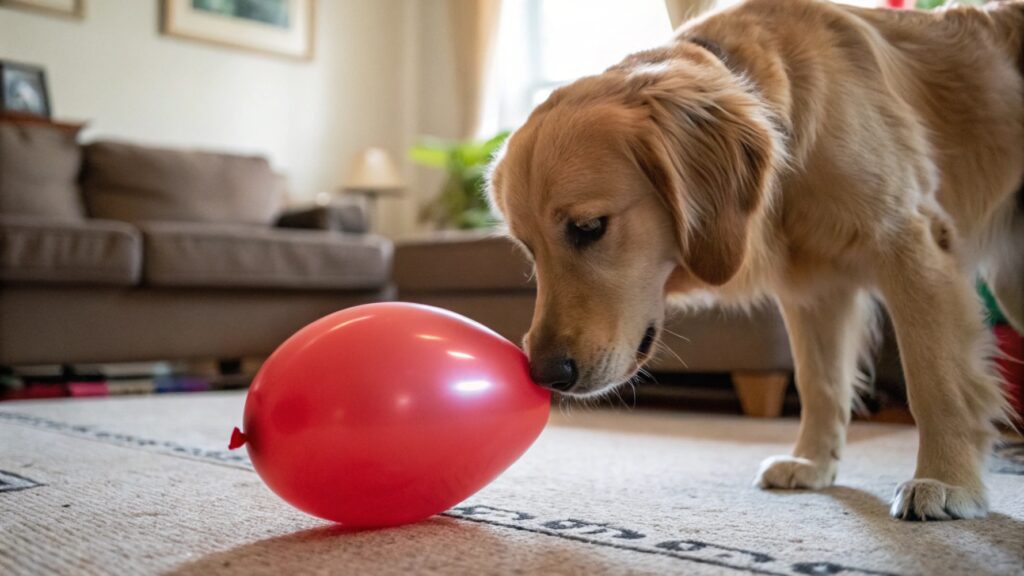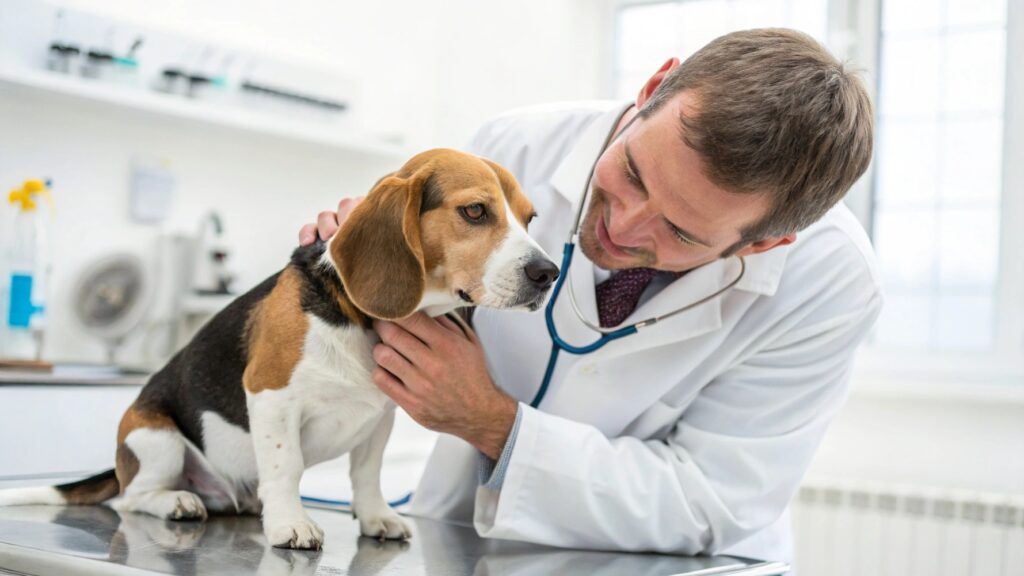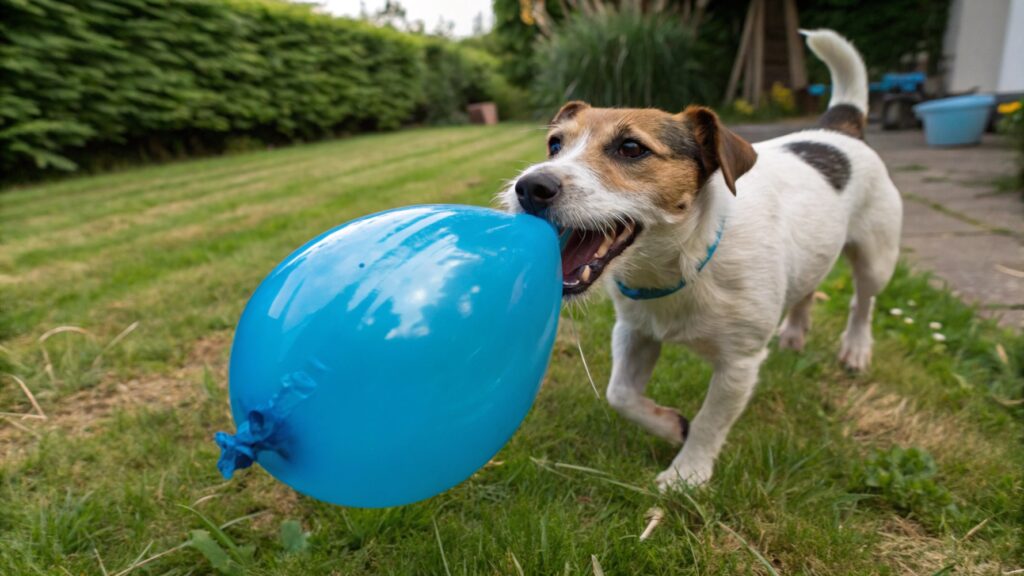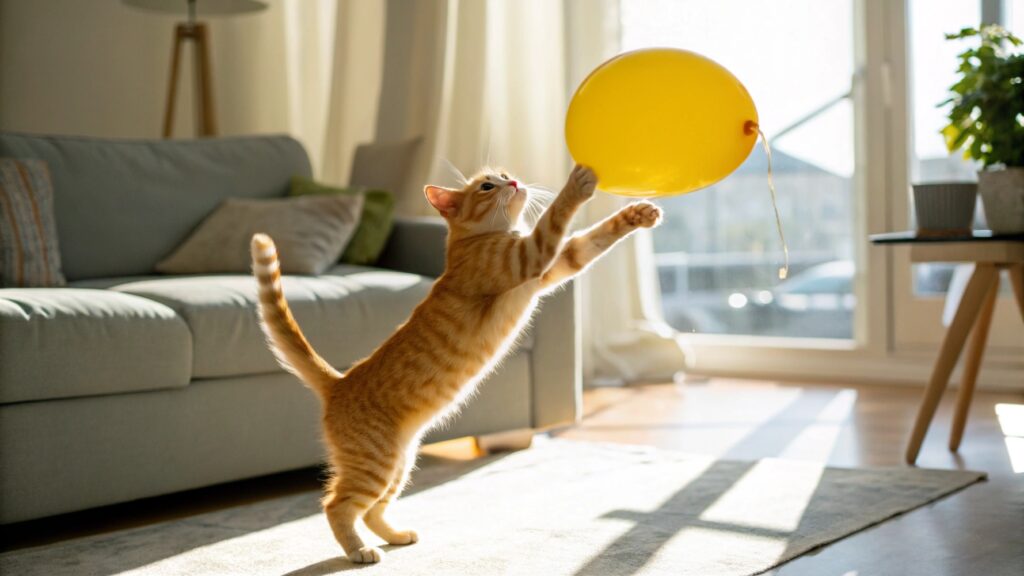Are latex balloons safe for pets?
Are you wondering if those colorful latex balloons are safe for your furry friends? It is important to know that latex balloons are not safe for pets. They can be very dangerous.
Latex balloons are not safe for pets.1 They can cause pets to choke2. They also can block their intestines3 if swallowed. Even deflated balloons4 can be a problem. Pets might try to play with them. The small pieces5 can be harmful if a pet eats them.

I have seen many people set up beautiful balloon decorations. They do not always think about their pets. As someone who has been in the balloon industry for over a decade, I always stress safety. This includes safety for animals. I want to make sure everyone enjoys balloons responsibly.
Are latex balloons toxic to animals if ingested?
Do you worry if your pet eats a latex balloon? Many pet owners ask this question. The main risk with latex balloons is not usually toxicity. The bigger problem is physical harm6.
The material itself, natural latex, is generally considered non-toxic. This means it will not poison your pet. However, the risk comes from the balloon's physical properties. A piece of a balloon can get stuck inside your pet. It can cause serious blockages7. This can be very dangerous for your pet's health.

The natural latex8 in balloons is not often toxic. But, you should always be careful. The danger is not usually from chemicals. It is from the balloon's shape and how it acts in the body. I have learned a lot about materials. I know that even "natural" things can cause problems if not used right.
What happens if a pet ingests latex?
If a pet eats a piece of latex, it might pass through. But, it can also get stuck. This can happen in the throat. It can happen in the stomach. It can also happen in the intestines. A blockage is a serious issue. It can need surgery.
| Risk Area | Description | Severity |
|---|---|---|
| Choking | Balloon pieces can block the airway and stop breathing. | Immediate danger |
| Stomach | Pieces can sit in the stomach and cause pain or vomiting. | Moderate to High |
| Intestines | Balloon parts can block the intestines, leading to severe illness. | Very High, needs surgery |
| Digestion | Latex is not digestible. It will not break down in the body. | Accumulation risk |
I have heard stories from customers about pets eating things. They often do not understand the danger until it is too late. My goal is to prevent these situations. Bloating, vomiting, and pain are signs of a problem. If your pet shows these signs after eating a balloon, see a vet right away.
Can pets choke on deflated latex balloons?
Do deflated latex balloons pose a choking risk? Many people think deflated balloons are harmless. But, they are not. They are actually a huge choking hazard9 for pets.
When a latex balloon deflates, it becomes soft and pliable. It can easily conform to the shape of a pet's throat. This makes it very easy for pets to accidentally inhale or swallow a piece. The rubbery material can then suction to the airway, making it difficult or impossible for the pet to breathe.

I have always told people to pick up all balloon pieces. This is even more important for pets. A deflated balloon looks like a toy to a pet. They might chew on it. They might swallow it.
Why are deflated balloons so dangerous for pets?
Deflated balloons are dangerous because of their texture. They are stretchy. They are also soft. This makes it easy for them to get stuck. They can block a pet's airway. They can also get stuck in the digestive system. This can act like a vacuum seal. It makes them hard to remove.
| Hazard Type | Description | Example Scenario |
|---|---|---|
| Airway Blockage | Soft, stretchy latex molds to the throat, blocking air flow. | Pet tries to chew, inhales piece, it suctions to trachea. |
| Intestinal Blockage | Swallowed pieces can get stuck in the intestines. | Pet eats a balloon, it travels down, gets lodged. |
| Aspiration | Small pieces can be inhaled directly into the lungs. | Pet plays with balloon, tears off piece, breathes it in. |
I have seen countless balloons after parties. Often, small pieces are left everywhere. These small pieces are the most dangerous. Pets, especially puppies or kittens, like to explore with their mouths. They will chew on anything. This is why quick cleanup is so important after any event with balloons.
What are the risks of pets playing with latex balloons?
Are your pets safe playing with latex balloons? Many people let their pets play with balloons. They look like fun toys. But, there are real dangers when pets play with latex balloons.
The main risks are choking and blockage if ingested. Also, the loud popping sound of a balloon can scare a pet. This can cause stress or anxiety10. Balloons can also break into many small pieces. These pieces are then easy for a pet to swallow. This makes the risk even higher.

When I think about safety, I think about all parts. This includes how products are used and misused. A balloon is for decoration or celebration. It is not a pet toy. It is better to prevent any bad things from happening.
How does playing with balloons put pets at risk?
When pets play with balloons, they might chew them. They might try to eat them. Even a small piece torn off can cause a problem. The fun can turn into a very scary situation quickly.
| Risk Category | Specific Danger Point | Consequence |
|---|---|---|
| Ingestion | Swallowing large or small pieces of latex. | Choking, intestinal blockage, vomiting, pain. |
| Inhalation | Breathing in small, light pieces of burst balloon. | Aspiration, respiratory distress, lung damage. |
| Fear/Stress | Sudden loud pop of a bursting balloon. | Anxiety, behavioral issues, fear of loud noises. |
| Entanglement | Getting tangled in ribbons or strings attached to balloons. | Injury, panic, strangulation (rare but possible). |
I always advise my clients who love animals to be careful. It is not just about the balloon's material. It is about how pets interact with it. Dogs and cats are curious. They will often put things in their mouths. This is why we must be extra watchful. We must keep balloons away from them.
How can I ensure my pet's safety around balloons?
Do you want to keep your pets safe around balloons? It is easy to make sure your pets are safe. You must take steps to prevent any accidents11. This is very important for their well-being.
The best way to ensure your pet's safety around balloons is to keep them completely separate. If you have balloons, put them in a room your pet cannot enter. Use baby gates or close doors. Always supervise your pet12 when balloons are present. Clean up all balloon pieces immediately after they pop or deflate. Pay close attention to small fragments.
[^13] for a pet](https://aihuaballoon.com/wp-content/uploads/2025/07/a-safe-tidy-living-room-with-a-baby-gate-blocking-1024x577.jpg)
I always tell people, prevention is key. It is easier to prevent a problem than to fix one. This is especially true when it comes to pet safety. As a supplier of balloons, safety is my top priority. This applies to consumers and their pets.
What are the best practices for pet safety13 with balloons?
There are simple steps you can take. These steps will keep your pets safe. They will ensure happy celebrations for everyone.
- Supervise: Never leave pets alone with balloons. Not even for a minute.
- Secure: Put balloons in areas pets cannot reach. High shelves are good. Closed rooms are better.
- Clean Up: Immediately pick up all balloon pieces. This includes popped and deflated ones. Always check under furniture.
- No Play: Do not let your pets play with balloons. Give them safe toys made for pets instead.
- Educate: Tell guests about pet safety. Ask them to help keep areas clean from balloon debris14.
- Storage: Store uninflated balloons in a secure, pet-proof container.
My company, AIHUA BALLOON, always puts safety first. We focus on high-quality balloons15. They meet global safety standards. But even the safest product needs responsible use16. This is very important when pets are involved. Your furry family members depend on you to keep them safe.
Conclusion
Latex balloons are not safe for pets. They cause choking and blockages. Always keep balloons away from pets. Clean up all balloon pieces immediately to prevent accidents.
-
Discover why latex balloons pose serious risks to your pets and how to keep them safe. ↩
-
Learn about the choking hazards associated with latex balloons and how to prevent them. ↩
-
Understand the dangers of intestinal blockages caused by swallowed latex balloons. ↩
-
Find out why deflated balloons can be a choking hazard for your furry friends. ↩
-
Discover the risks associated with small balloon fragments and pet safety. ↩
-
Explore the potential physical dangers latex balloons pose to pets. ↩
-
Learn how to identify serious blockages in pets caused by latex balloon ingestion. ↩
-
Discover the safety of natural latex and its effects on pet health. ↩
-
Find out why deflated balloons are particularly dangerous for pets. ↩
-
Learn how balloons can lead to stress and anxiety in your pets. ↩
-
Explore effective strategies to prevent accidents involving pets and balloons. ↩
-
Get tips on how to effectively supervise your pets during balloon events. ↩
-
Find out essential practices to ensure your pet's safety around balloons. ↩
-
Learn the best methods for cleaning up balloon debris to protect your pets. ↩
-
Discover the advantages of choosing high-quality balloons for safety. ↩
-
Understand the importance of responsible balloon use to keep pets safe. ↩
